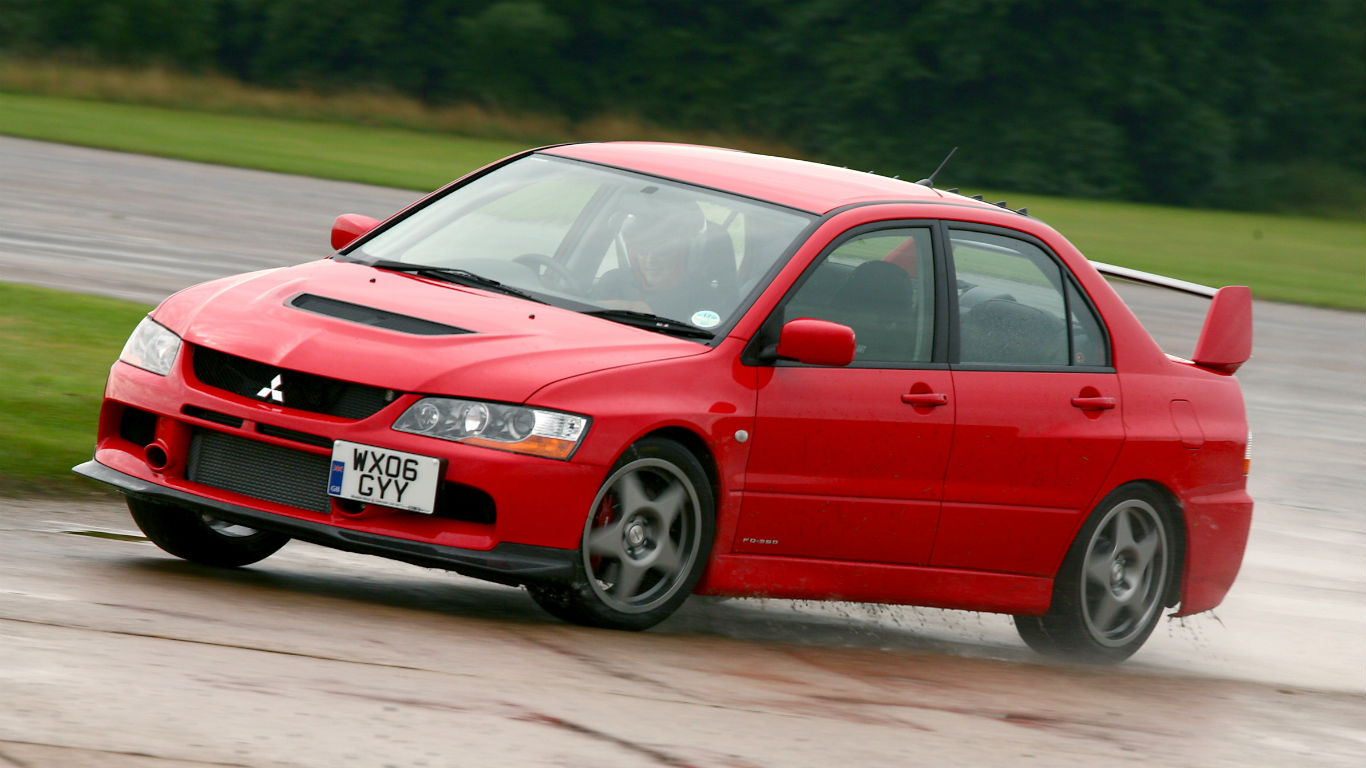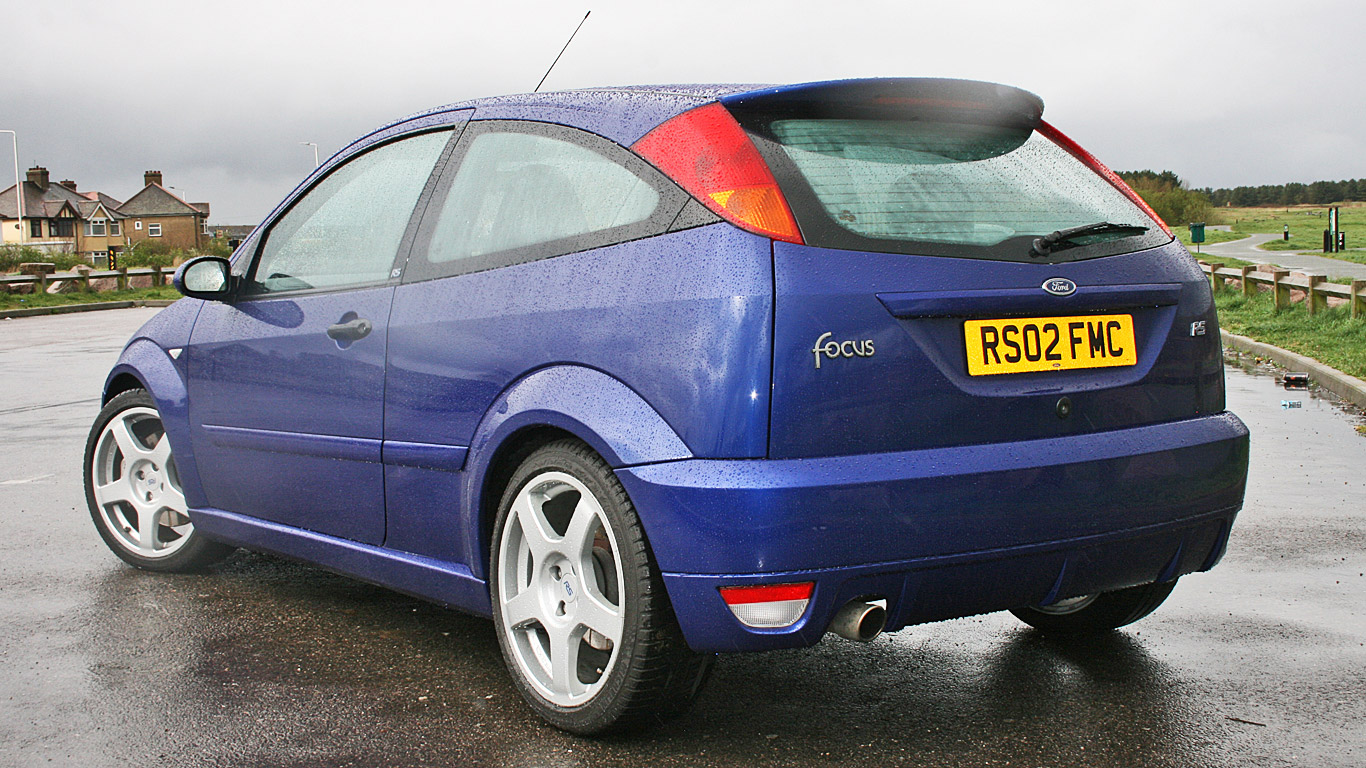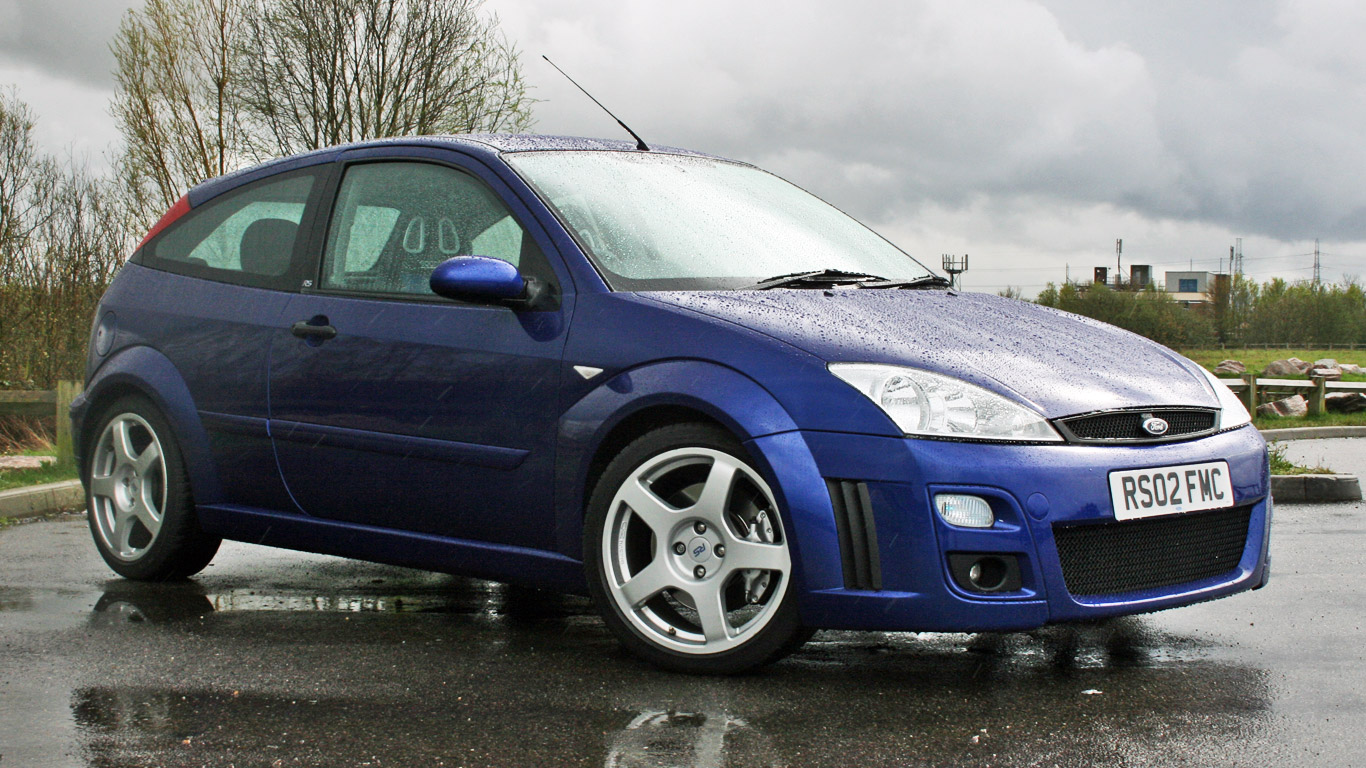Even today, few family cars drive better than the original 1998 Ford Focus. With its ingenious Control Blade rear suspension, this humble hatchback could out-handle some sports cars.
Opinions of the first Focus RS, though, are more mixed. Launched in 2002, some rate it as one of the greatest fast Fords. Others, meanwhile, dismiss it as a torque-steering tearaway.

We borrowed a Focus RS – number 0001 of 4,501 cars made, and part of Ford UK’s heritage fleet – to decide who is right.
What are its rivals?

The Focus is a front-wheel-drive hatchback, yet its most obvious in-period rivals – the Mitsubishi Lancer Evo (pictured) and Subaru Impreza WRX – were four-wheel-drive saloons. Both offer more oomph and, special editions aside, are similar money to buy second-hand.
Fancy something more civilised? Consider the Audi S3 or Volkswagen Golf R32. These four-wheel-drive Germans outgun the Focus in terms of horsepower, but not driving thrills.
What engine does it use?

The Ford’s 2.0-litre four-cylinder turbocharged engine drives through a five-speed manual gearbox.
Peak power of 212hp arrives at 5,500rpm, with maximum torque of 229lb ft from a useful 3,500rpm. The 0-60mph sprint takes 5.9 seconds and top speed is 143mph.
To tame those wild horses, Ford used a Quaife torque-biasing differential. It works by diverting twist to the opposite front wheel if wheelspin is detected, improving traction and agility – at the expense of some refinement. And on that topic…
What’s it like to drive?

That mechanical front diff is essentially a sticking plaster – a solution to sending so much power through the steered wheels. But it defines the character of the RS more than anything else, giving it a ravenous appetite for corners.
Find a B-road and car turns in with eager immediacy, the wheel writhing between your palms. Then the diff starts to bite, hauling it around like an arm hooked around a lamp post. It’s pointy and purposeful.
In line with its reputation, the RS also quite physical and more than a little unruly. There’s torque steer, some turbo lag and plenty of whooshy wastegate noise. We’re inclined to see these traits as part of car’s character, though, rather than faults to be ironed-out.
A 212hp output is merely Ford Fiesta ST territory now. But the 1,278kg RS is a fast car and, believe me, it still feels like one.
Reliability and running costs

Average fuel economy of 27.9mpg won’t impress your neighbours in their Focus 1.0 Ecoboost. But console yourself by remembering that, as your car increases in value, theirs will plummet.
Service and maintenance costs should be manageable (this is a Ford, after all), but custom RS-specific body panels mean accident or rust-related repairs can be expensive.
Reliability will largely depend on how the car has been driven. It sounds obvious, but some will have been pampered, while others will have been thrashed (and possibly crashed). Buying from a Ford enthusiast and RS club member is probably a good start.
Could I drive it every day?

Wrestling the RS along a country road can be tiring. If you want to ‘make progress’, the car makes you work for it.
At anything less than eight-tenths, though, it calms down and does a passable impression of a vanilla Focus. The ride on 18-inch OZ Racing alloys is firm, but not hyperactive like a Fiesta ST.
Practicality is also a match for any mid-size hatchback – save for the three-door-only body. Ironically, the Mk3 Focus RS only came with five doors.
There are aren’t many classics you could comfortably commute in, but the Focus ticks that box. Shame the number of Mk1 RS daily-drivers is dwindling fast, as owners eye-up the car’s investment potential.
How much should I pay?
Just less than half the Mk1s built came to the UK, so you may find cheaper left-hand-drive examples from Europe in the classifieds. For a RHD UK car, prices currently start at around £15,000, although the best examples stretch beyond £40,000.
For that price, you could also consider the MK2 RS, which is faster and even better to drive. However, it’s also more common (with 11,500 made) and arguably less exciting.
Then there’s the Mk3 version, which adds four-wheel drive and yet more power to the mix. Like its predecessors, it’s one of the defining performance cars of its era.
What should I look out for?

If anything, the Mk1 RS is over-engineered. Mechanical components, including the engine and Quaife differential, are tough, but that shouldn’t stop you insisting on a fully-documented service history.
Ensure the cambelt has been changed at least once, preferably well in advance of the recommended 100,000-mile interval, and don’t dismiss cars with an additional non-standard intercooler – it can help prolong the life of the engine. Steer clear of any modifications aiming at boosting power output, though. Winding up the turbo boost is a recipe for lots of lag and lots of trouble.
Check those unique RS body panels carefully, as some are becoming hard to source. Peer under the wheelarches for signs of rust where the bodykit meets the metal and look for uneven panel gaps due to crash damage. Check those unique RS body panels carefully, as some are becoming hard to source. Peer under the wheelarches for signs of rust where the bodykit meets the metal and look for uneven panel gaps due to crash damage.
Don’t forget to check all the RS-specific interior bits, such as the two-tone steering wheel and Sparco gearknob, are also present and correct. That garish blue trim might look a bit ‘Halfords’, but it’s an important part of the car’s identity. Remember, originality is key when it comes to value.
Should I buy one?

Speaking of value, fast Fords are always in demand and, in theory, this longer-term gain in the car’s worth can be offset against the cost of running one. Bear in mind, however, that nothing is guaranteed, so I’d buy a Focus RS to drive and enjoy – with any rise in value a welcome bonus.
Despite my initial misgivings, the Focus RS won me over with its old-school hot hatch charm. Handing back the keys, I yearned for more time behind the wheel.
For my money, the Ford Racing Puma from the same era feels even more special. But the added performance and practicality of the Focus would swing it for many.
Pub fact

The Mk1 RS was an effective halo car, but Ford lost money on every one sold. The exact amount is uncertain; internet forums suggest anything between £4,000 and £6,000 per car.
This hole in the balance sheet is one reason the later Mk3 Focus RS (pictured above) didn’t have custom body panels and shared more parts with the standard car. Ford execs insisted that even the RS must be profitable in its own right.
What a shame they considered the fourth-generation Focus RS likely to make a loss – and abandoned the project as a result.
ALSO READ:
Ford Sierra Cosworth RS500 breaks auction record with £596,250 sale


